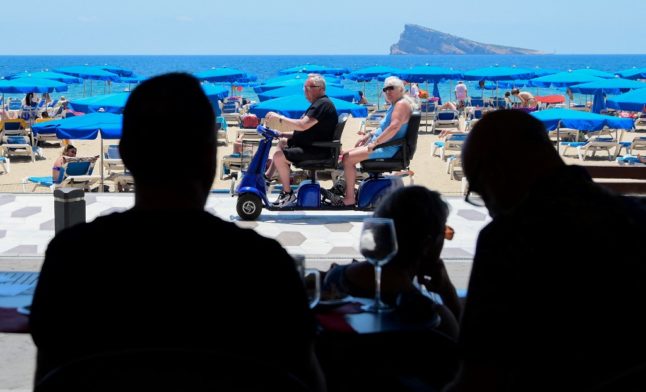If you live in Stockholm and want to test your patience or sanity this week, try walking briskly from the main square at Sergels Torg near Åhlens department store all the way to the picturesque Old City.
It is like trying to swim through a sea of molasses.
The wide boulevard Drottninggatan (Queen Street) is packed solid with humanity, and everyone seems to be standing still, consulting a paper map, taking a photograph, or licking an ice cream cone.
Sweden is closed this week as a workplace. Prime Minister Fredrik Reinfeldt is on vacation, as are many of his ministers. Mona Sahlin, head of the opposition Social Democratic Party is on holiday, as are most people who hold responsible positions in society.
Many small, independent cafes or clothing stores which have only a few employees have a sign in their windows that says, “Semester stängt,” closed for the holiday.
Those few poor souls who remain at their usual work stations have busloads of domestic or foreign tourists to keep them company.
I called Peter Lindqvist, head of the Stockholm Visitors’ Board, to confirm what I already strongly suspected: “Yes, it is a high point right now for tourism,” he said.
“We have cruise ships coming into the city nearly every day.”
Before you start your slow march up Queen Street, you have to cross the intersection at Hamngatan. This is a challenge in itself.
Massive crowds have coagulated on each side of the street listening attentively to Peruvian street musicians dressed in colourful costumes performing on the flute and stringed instruments, amplified by super-powerful loudspeakers.
Regrettably, these musicians seem to have only have only one or two tunes, and they play them year after year.
Every few hundred metres on the broad boulevard, traffic comes to a complete halt, as tourists with belly bags on their tummies and a digital camera hanging by a leather strap stop to enjoy mediocre street entertainment, creating a pedestrian gridlock.
It never ceases to amaze me how people who have spent thousands of euros to travel to Stockholm from Italy, Germany, Russia or Japan will stand spellbound for half an hour, gawking at a performance by a man prancing about with a doll dummy dressed in a tuxedo.
If you for some reason feel compelled to buy a plastic Viking helmet or sword to make your life complete, this street is the place to find it.
Horned helmets in blue-and-gold with attached pig-tails in bright yellow yarn are the latest fashion in head-gear this summer. Visitors who have no intention of buying those helmets like to try them on in order to be immortalized in a photograph.
Pleasant Greek folk music is playing incongruously in a candy store on Queen Street where one can purchase post cards and other tourist necessities. “We sell a lot of objects with moose on them,” the clerk informs me.
For some reason, a surprisingly old-fashioned form of advertisement flourishes on this particular street.
Men, usually immigrants of one flavour or another, stand all day with signboards hanging on their shoulders or mounted on a pole, pointing the way to a certain restaurant or clothing shop.
Earlier today, I stopped to chat with a fellow wearing a red fez cap and a signboard promoting Lebanese food, but he didn’t speak Swedish or English.
If one is looking for exceptional culinary delights, this stretch of Queen Street is probably not the best place to find them.
There are the same type of overpriced coffee shops one finds all over the world, an Italian-Swedish restaurant where you can sample the traditional Swedish “plank steak,” a kebab joint called Klabbes (the name doesn’t sound very appetizing to me but the kebabs are O.K), an English pub with a big selection of beer, and a Mongolian barbeque called Bamboo City, where you can have a Thai lunch buffet, a sort of Asian smorgasbord..
That last-named restaurant has the ugliest outside seating in Stockholm, and maybe in the universe. The plastic chairs are in a revolting fluorescent lime green, gaudy enough to put one off one’s appetite.
Someone, please call the style police!



 Please whitelist us to continue reading.
Please whitelist us to continue reading.